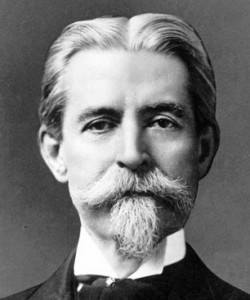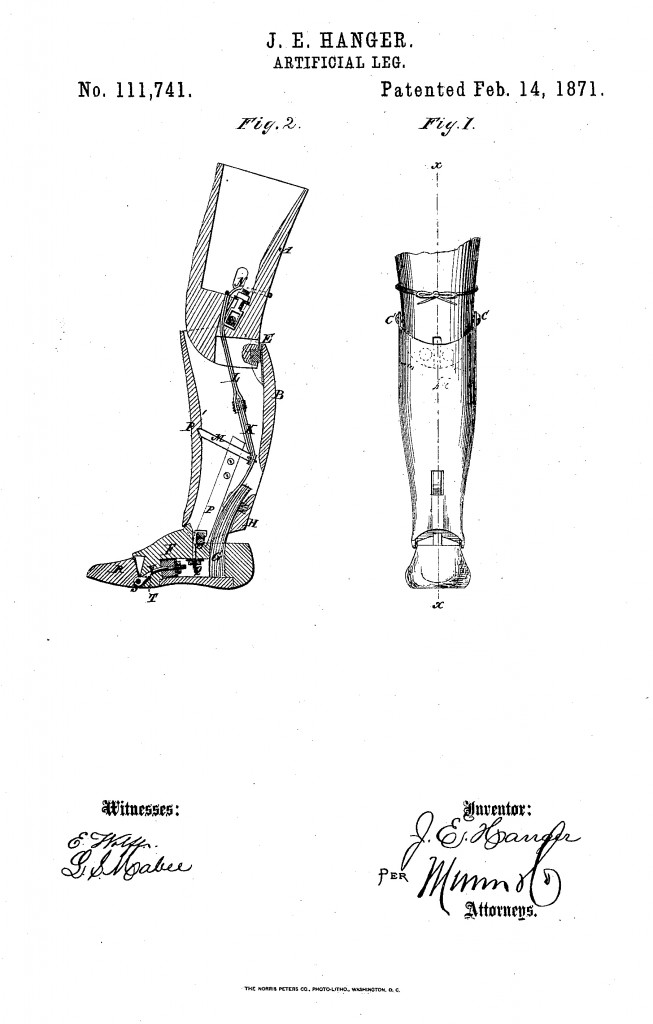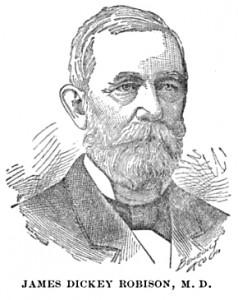
James Hanger wanted to be a cavalry soldier like his two older brothers. In the spring of 1861, the 18-year-old engineering student at Washington College in Lexington, Virginia left school and travelled to Philippi, (West) Virginia. The Churchville Cavalry, his hometown militia, was stationed in the town as part of a small Confederate force guarding the nearby Baltimore & Ohio Railroad. On the morning of June 3, 1861, the newly enlisted Private Hanger found himself on guard duty at a local farm. In what became the first land battle of the Civil War, Union forces had converged on Philippi in an attempt to entrap the small Rebel force.
The fighting started when a Union battery opened fire on a nearby Confederate camp. The first two shots from the battery were canister, and the young Hanger ran into the barn to get his horse. The third shot, however, was a six-pound solid ball that crashed into the barn and ricocheted off a door post. The ball struck Hanger in the left leg near the knee joint and then “passed through six thicknesses of two or two and a half oak plank stall partitions and partially penetrated the seventh. There its momentum was exhausted and the ball fell in the stall.”
Unable to walk with his “wounded leg hanging by a small part of the skin,” Hanger dragged himself into the hay loft to hide. Fortunately, he was found by Union scouts several hours later. Shortly thereafter, Dr. James D. Robison of the 16th Ohio Infantry, assisted by surgeon George W. New of the 7th Indiana Infantry, performed an amputation of Hanger’s leg seven inches below the hip – the first recorded amputation of the Civil War.
Hanger survived the surgery and convalesced under Union care before being released in a prisoner exchange in August 1861. Walking with the aid of a wooden “peg leg,” he returned home to Churchville, Virginia, and reportedly went into seclusion in an upstairs room. Unhappy with the limited mobility of his prosthetic, and “too patriotic to be dependent upon the Yankees for an artificial leg,” Hanger spent the next three months designing and building a better artificial limb. Using oak barrel staves, he fashioned an articulated, or hinged, prosthetic leg that was able to bend at both the knee and the ankle.
Later that year, Hanger established a business in Staunton, Virginia and began making the prosthetic for fellow wounded Confederates. On March 23, 1863, he received his first patent (No. 155) for an “Artificial Leg” from the Confederate Patent Office. A modification of the original device led to a second Confederate patent on August 18, 1863. Impressed with the final product, the Association for the Relief of Maimed Soldiers commissioned Hanger in March 1864 to supply amputees with his artificial leg on a larger scale.

Continuing to manufacture the “Hanger Limb” after the Civil War, he received a contract from the Commonwealth of Virginia to furnish the prosthetic to the state’s wounded veterans. In 1871, he obtained the first of several U.S. Patents related to production of the artificial leg. The business moved to Washington, D.C. in 1888 and quickly branched out to other U.S. cities; incorporating as the J.E. Hanger Company in 1906. Offices were opened in Europe during World War I so the company could provide artificial limbs to both the French and English armies.
Although James Edward Hanger would pass away in Washington, D.C. on June 9, 1919, his business would continue to thrive. With his six sons assuming control of the company, the firm expanded well beyond its humble beginnings of a single leg made out of barrel staves. More than one hundred and fifty years later, Hanger, Inc. remains a leading provider of prosthetic and orthotic devices in the United States.


Excellent article:
Peter Mullen ~ Honorable Order of Kentucky Colonels
“Proud to be Southern”
This is the kind of person young people need to be introduced to, someone who was creative, inventive, caring and practical all wrapped up in one. The true disability is not in losing a limb but in losing one’s vision and being unable to discover the opportunity hidden beneath the disaster.
My great grandfather was also at this battle .He was also wounded the same day. I am in possession of a letter from the clerk of the circuit court of Phillipii asking him if he could shed any light on the battle fought there. Pretty cool piece of civil war history.
This is a very interesting story from the
US Civil War – the mid-1800’s the first Golden
Age of Inovation – still a world renown provider of
prosthetics + after well over 150 years!
Just another inspiring story coming from
the horror of the Civil War – that I can add to the
list.
As an amputee myself(above knee, right leg) & a proud member of The Sons of Confederate Veterans descended from a member of Co. F&G, Fourth North Carolina Cavalry Battalion,this article makes me even prouder of my Hanger Prosthetic Leg & in fact chose Hanger Co. SPECIFICALLY because of it’s history !